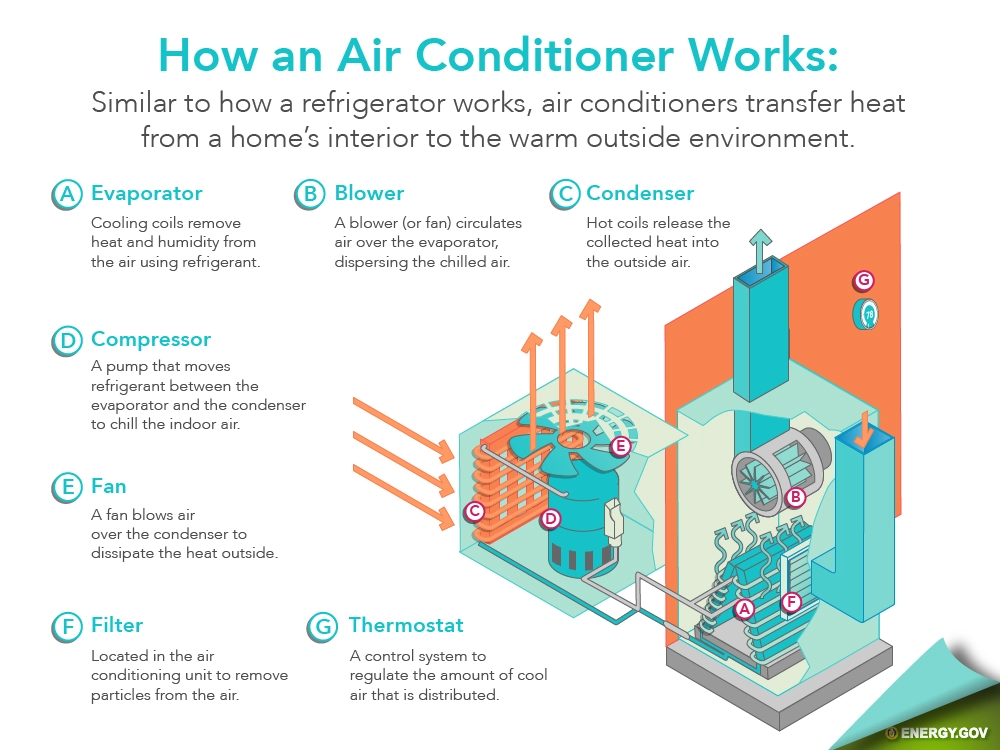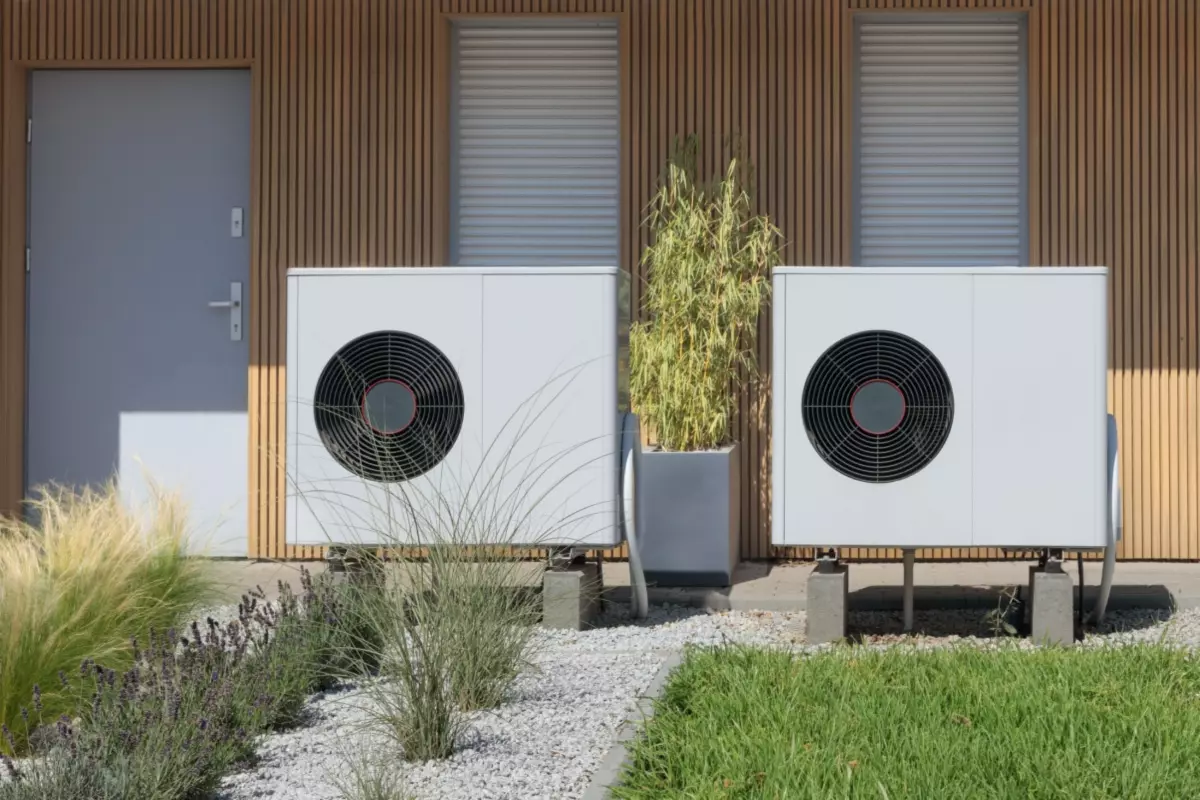Imagine it’s over 100 degrees outside, and you’ve spent hours walking under the sun. Then, you walk into a supermarket where the air conditioning is on. It truly is like crossing into a different world. The oppressive heat immediately fades away, replaced by a refreshing breeze that feels like an arctic oasis. But have you ever wondered how air conditioning works?

I’m pretty sure that’s not the first thought that comes to mind right at that satisfying moment. But it is something that you may have thought about some time after. In this blog, we uncover the technology behind ACs and how they cool your space. So grab a cold drink and continue reading.
An indoor air conditioner functions by circulating a special refrigerant through a series of components that work together to cool and dehumidify indoor air. A quick note on the refrigerant: it is a chemical compound that can easily change between gas and liquid states and circulates throughout the entire air conditioning system. It’s the key component that carries heat out of your home, enabling the cooling process.
The air conditioner pulls warm air from inside, cools it by passing it through chilled coils, and then blows the cooler air back into your space. The heat extracted from your home is expelled outside, creating a continuous cycle that keeps your indoor environment cool and pleasant.
A built-in thermostat that senses the room temperature regulates the process and controls the system to maintain your desired comfort level. It all happens very fast, so you may not notice the inner workings of how AC works, but in this next section, we’ll look into the core components and see what they do.
There are four major components in an air conditioning system. Every AC system has two units: indoor and outdoor. The indoor unit includes the evaporator and the expansion valve, while the condenser and compressor are located in the outdoor unit. The compressor assists the condenser, while the expansion valve assists the evaporator.
Let’s see what each of them is and how they work together to cool your spaces.
The compressor, located in the outdoor unit, is the heart of your AC system. Its main function is to circulate the refrigerant. By pressurizing the refrigerant, the compressor makes sure it flows through the AC system efficiently. Without the compressor’s support, the refrigerant wouldn’t be able to move through the system and allow the cooling process to take place.
Located in the indoor unit, the evaporator coil cools your indoor air by absorbing heat. It carries the cold, low-pressure refrigerant through its tubing. As warm air passes over the coils, the refrigerant absorbs the heat, cooling the air in the process.
The condenser coil is located in the outdoor unit. Its primary function is to take hot indoor air and expel it outdoors. It also cools down the refrigerant, helping turn it into liquid form so it can start the cooling process again.
The expansion valve, sometimes called a metering device, controls the amount of refrigerant flowing into the evaporator coil. It is located in the indoor unit. By regulating the amount and the pressure of the refrigerant, the expansion valve ensures that the refrigerant can efficiently absorb heat when it passes through the evaporator coil.
So, exactly how does air conditioning work to transform your space into a cool oasis? It’s not magic, but it’s pretty close. Here’s a step-by-step breakdown of how your AC works to keep you comfortable:
The cooling process begins when the indoor thermostat detects that the temperature has risen above the desired or set threshold. It sends a signal to the air conditioning system, primarily the compressor, to start the cooling process.
Upon receiving the start signal, the compressor in the outdoor unit starts to pressurize the refrigerant. This increases the refrigerant’s temperature and pressure, where it is turned into a hot, high-pressure gas.
Then, the hot, high-pressure gas refrigerant passes into the condenser, where it expels some heat outside. The primary goal of the condenser is to release some of the refrigerant’s heat to change it from a gas to a high-pressure liquid.
The refrigerant must be in a pressured liquid state to be able to absorb the indoor heat and cool the air.
Next, the high-pressure liquid refrigerant moves into the expansion valve, which reduces its pressure. As a result, the refrigerant cools very quickly and turns back into a low-pressure liquid-gas mixture.
After the refrigerant is depressurized, the expansion valve controls the amount of refrigerant that is moved into the evaporator coils in the next stage of the cycle.
At this stage, the real magic happens – the cold, low-pressure refrigerant moves to the evaporator coils. The warm indoor air is blown over the evaporator coils where heat transfers from the air to the refrigerant.
During this stage, the refrigerant absorbs the heat in the air to naturally cool it. As the refrigerant absorbs more heat it transforms from a liquid to a gas. The naturally cooler air is recirculated inside the home, and the hot refrigerant gas travels back to the compressor.
Once the hot refrigerant travels back to the compressor, the cycle starts again until the thermostat signals to the system that the desired temperature has been reached.
In addition to cooling your air, AC systems also come with several surprising health benefits. Here are some to name a few:

Air conditioning enhances our quality of life and offers numerous health benefits. It would be a big loss if your AC doesn’t work. Now that we’ve demystified the sophisticated mechanics behind how air conditioning systems work, you can appreciate its hard work even more during scorchers.